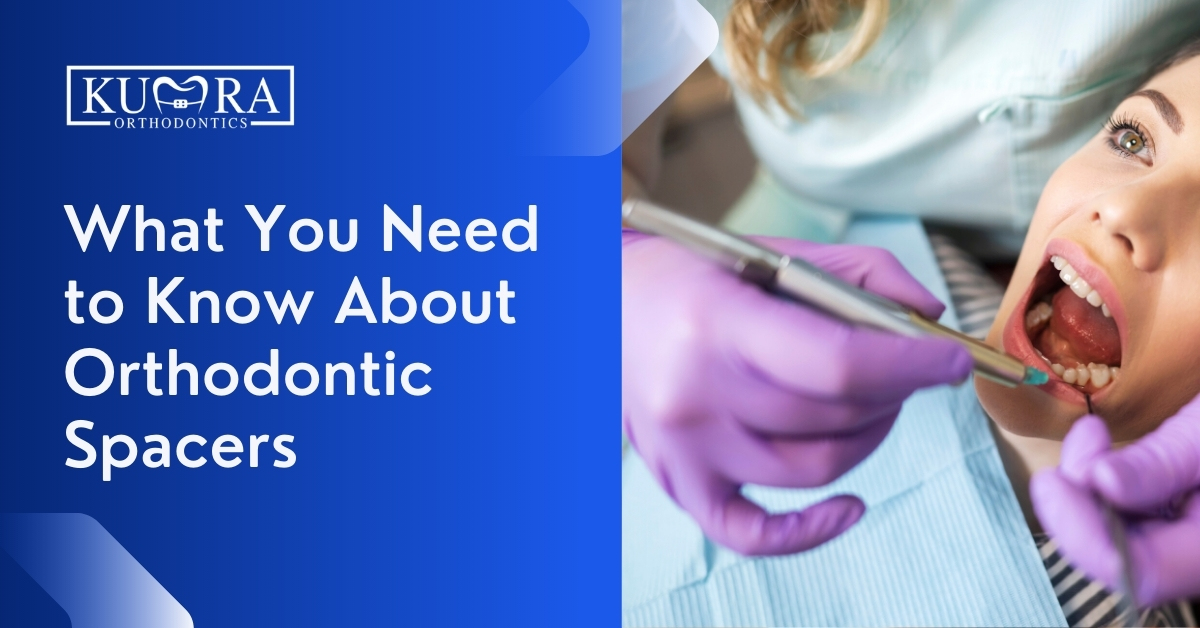If you’re a dental patient who is scheduled to have orthodontic work done, you may be wondering what to expect. One of the procedures that you’ll likely undergo before your braces are put on is the placement of orthodontic spacers. While they are not always necessary, spacers may be recommended if you have crowded teeth or if your orthodontist needs to adjust the spacing on your braces.
Orthodontic spacers can be uncomfortable and cause some soreness in your mouth, but they are a necessary part of the orthodontic treatment process. Keep reading to learn more about orthodontic spacers and what you can expect during your treatment.
What are Orthodontic Spacers?
Orthodontic spacers are small elastics or metal dividers used in orthodontics to create gaps between teeth. Each of the separators has a diameter of around a centimeter. Once your precise dental requirements have been determined, your orthodontist will place them as necessary.
If your orthodontist employs spacers for your braces treatment, you will wear them for 1-2 weeks before the bands are put on your back teeth. Generally, this is a temporary procedure. Your orthodontist will use this gap to attach metal bands to the archwire of the braces appliance, which will then gradually move the teeth into place.
Spacers can cause pain, tenderness, and soreness when they are first put in your mouth because your teeth are being moved by the force of the spacers. However, you should not worry about it as the discomfort naturally subsides after a few days.
Two Types of Orthodontic Spacers
Orthodontic spacers can be made from different materials. Here are some common types of spacers:
Rubber Spacers
With their malleability, they can both compress and push back just enough to generate room between the teeth.
These are usually installed before the application of braces. It’s possible that you’ll have to wear them for a few days or maybe a few weeks. Rubber spacers will be used for the majority of patients. To achieve the ideal fit, your dentist may need to stretch and adjust them.
Metal Spacers
They are less flexible and more rigid than rubber. Because of this, they are well-suited to withstand the pressure exerted by the teeth. In some cases, your orthodontist can add them to your braces.
Dental professionals can evaluate your teeth and your response to therapy and determine if you require metal spacers. Because metal spacers are more secure and less prone to moving around, they are often worn for a longer period of time. Apart from the little circle on one end, metal spacers are ovals with a little circle attached to one end.
Needing an orthodontic appointment?
Visit Kumra Orthodontics Washington, DC or Kumra Orthodontics Stafford, VA, and request an appointment with us!
Why Use Orthodontic Spacers?
The compactness of the back molars is the reason for the use of spacers in orthodontics. Your back molars have very little room between them, which is why a small gap is needed to accommodate the molar bands that go around them.
Your teeth begin to shift as soon as the braces are put on. If you don’t use spacers for braces, your rear teeth may get too close together, which is not ideal. In addition to increasing your chances of developing cavities, this might cause your teeth to misalign. The use of dental spacers is a time-saving convenience.
Frequently Asked Questions
Do spacers hurt more than braces?
There is some discomfort and agony when the spacers are first implanted, but they don’t hurt any more than braces. This is because just a small amount of pressure is applied to a small number of teeth. Spacers are more uncomfortable if your teeth are crowded together.
How long should you wear spacers?
Three to five days is a good amount of time to wear spacers between your teeth. This enables a smooth transition to molar bands in the future by creating ample room between your rear teeth.
Can you eat while wearing orthodontic spacers?
Having spacers and braces means you can only eat certain types of food while they are in place, which can be a major concern.
For example, you must avoid chewy, sticky foods such as caramel, taffy, and gum, which can cling to the braces and spacers. In addition, foods that need greater strength to chew, such as nuts, corn on the cob, and raw hard fruits, might cause the wires in your braces to break. If you are still wearing spacers, chewing hard meals can be rather painful.
Consult with Kumra Orthodontics to Learn More about Spacers for Braces
If you are in need of orthodontic treatment and would like to know more about spacers for braces, be sure to consult with a qualified orthodontist. At Kumra Orthodontics, we are happy to answer any questions you may have about the use of spacers and how they can benefit your smile.



